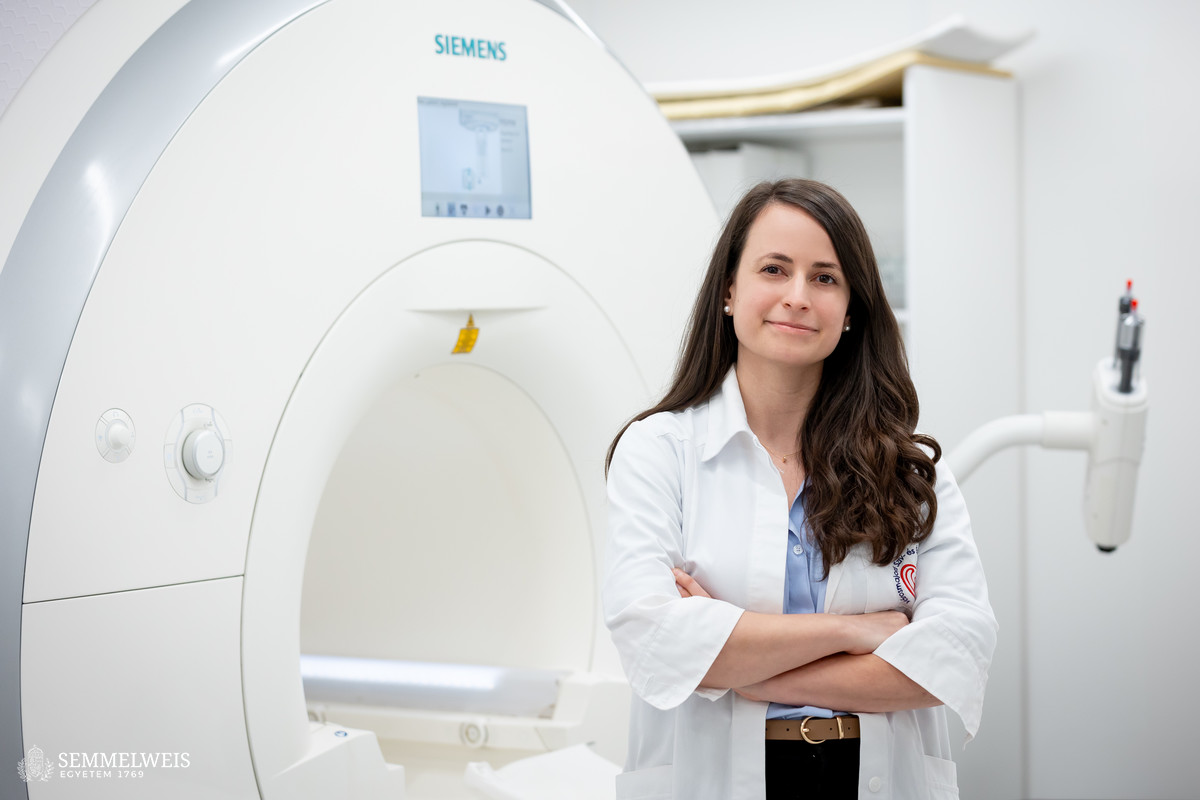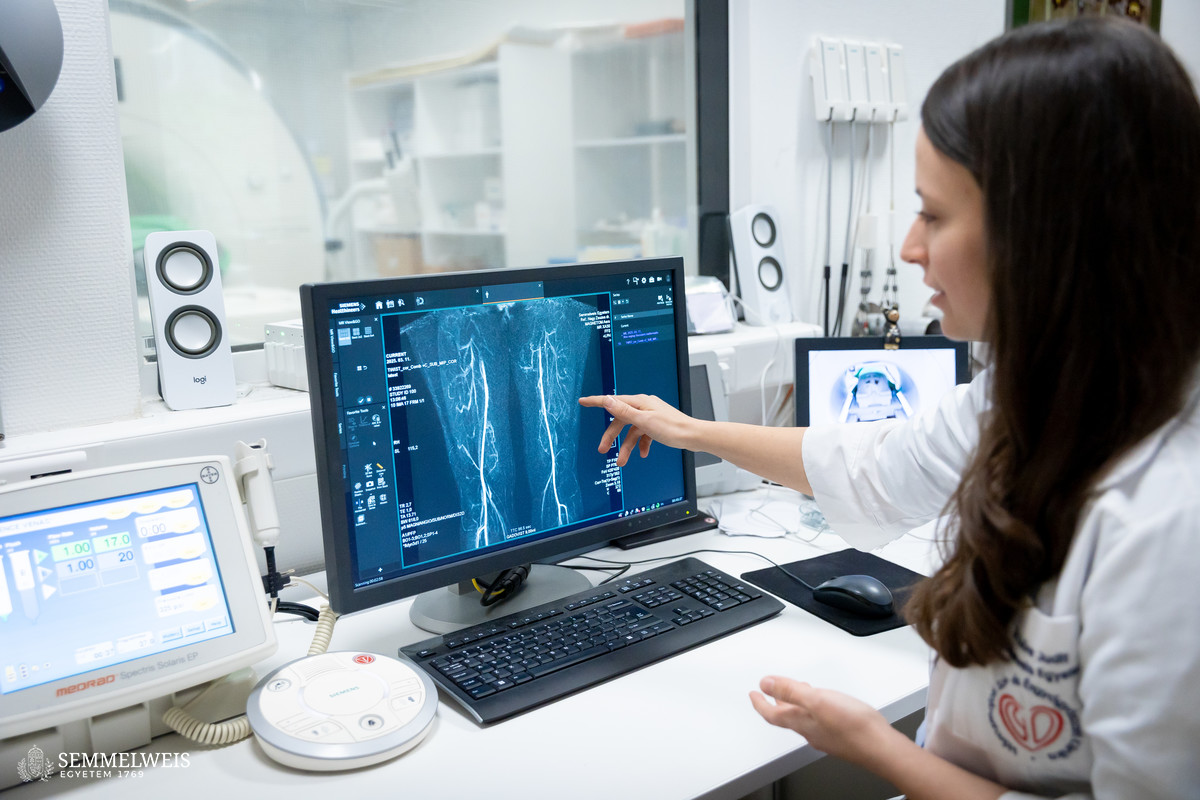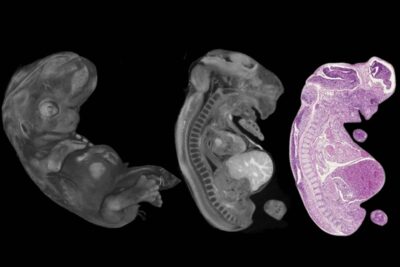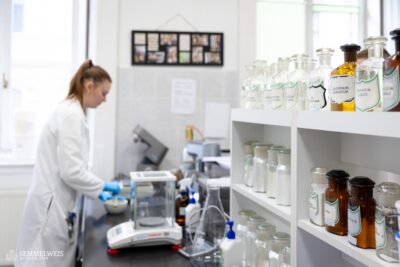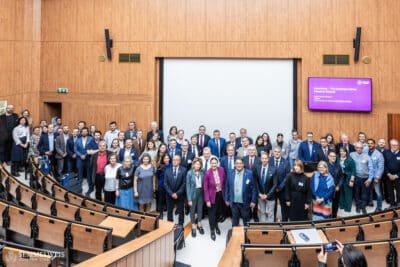The conference in Budapest is of special importance to the profession in Hungary in several respects: First of all, about 200 international participants from the world’s largest research centers (such as Stanford, UCLA, Mayo Clinic, Harvard) will come to Semmelweis University; secondly, the conference has not been hosted in Europe for many years, and this is the first time ever that the meeting will be held in Central Europe, said Dr. Judit Csőre, resident at the Városmajor Heart and Vascular Center. The organizers – including Dr. Jeremy Collins, Professor of Radiology for Mayo Clinic College of Medicine and Science in the United States and President of the Society for Magnetic Resonance Angiography (SMRA) – visited Budapest and surveyed the facilities at Semmelweis University in mid-March.
The conference, which will be held in the Basic Medical Science Center (EOK), will focus on vascular magnetic resonance imaging (MRI), including the heart and the entire vascular system (arterial and venous) from head to toe; there is typically also a strong emphasis on artificial intelligence and clinical research design. Dr. Judit Csőre added that they would like to bring some local flagship topics into the scientific program, such as sports cardiology or pediatric cardiovascular pathologies and related MRI.
The conference will be held from August 21-24. Dr. Judit Csőre pointed out that not only speakers and guests from the clinical field were welcome, but there were usually also many participants from allied professions, such as engineers, physicists, chemists, and representatives of medical technology companies.
A big advantage of MRI, compared to CTs, is that it allows patients to be examined without the use of radiation. In the diagnosis of vascular diseases, this can be of particular importance because there are some conditions that specifically affect young people (e.g. vascular inflammation), where the use of X-rays is a limiting factor. In addition, many vascular patients also suffer from renal failure; for them, it is important that there are now MRI scans that do not require contrast agents at all. “MR also has special technical capabilities that allow it to go beyond the limits of other imaging modalities and analyze the structure of blood vessels and vascular stenoses down to histological depth,” Dr. Judit Csőre explained.
In Hungary, these imaging methods have not been widely available until now. At the Városmajor Heart and Vascular Center, a fully non-contrast MRI technique for lower-limb arterial disease has been integrated into patient care in recent years, which is used daily by vascular surgeons. In addition to the organization of the conference and clinical work, Dr. Judit Csőre and her colleagues are also working on the establishment of a vascular MR research laboratory, which will be unique because so far there has not been a research group specifically focused on this topic in Hungary.
They would also like to bring technologies into the country that will not only put them in the scientific mainstream and among the leading vascular MRI centers, but also actually improve and develop patient care by making new examination methods and new MRI techniques available.
“This conference is of great importance for several reasons, one of which is to connect the vascular imaging researchers in Hungary with the biggest names in the centers abroad, and to introduce the latest MR angiography techniques in Hungary,” Dr. Judit Csőre added.
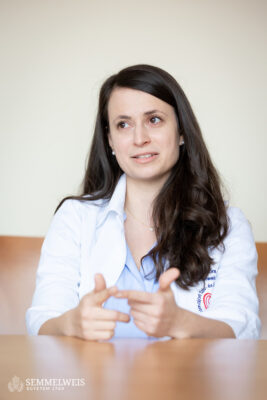 Dr. Judit Csőre spent two years (2022-2024) at Houston Methodist Hospital in an MRI laboratory with vascular surgeon and researcher Dr. Trisha Roy, whose specialization coincided with the young researcher’s PhD topic, lower-limb MRI. Their joint work was aimed at using the unique soft-tissue resolution and non-contrast techniques provided by MR to analyze plaques in vascular patients in any region down to histological depth. “The MR technologies we tested can help us make a targeted decision on whether to treat a patient with an open or an endovascular, i.e. catheter-based, intervention. In addition, we can gain a much more comprehensive picture of the pathomechanism, diagnosis, and treatment of vascular diseases, thus helping to develop a personalized, patient-centered treatment plan,” summarized Dr. Judit Csőre. The pioneering importance of the laboratory’s work is demonstrated by the fact that they have been awarded the National Institutes of Health’s (NIH) most prestigious grant of $3.3 million to continue their research. They summarized their results, among others, in a paper published in the Journal of Vascular Surgery, the official journal of the American Society for Vascular Surgery, which became the feature article of the month for February 2025, and they also had the opportunity to present their work more widely on the society’s podcast, Audible Bleeding.
Dr. Judit Csőre spent two years (2022-2024) at Houston Methodist Hospital in an MRI laboratory with vascular surgeon and researcher Dr. Trisha Roy, whose specialization coincided with the young researcher’s PhD topic, lower-limb MRI. Their joint work was aimed at using the unique soft-tissue resolution and non-contrast techniques provided by MR to analyze plaques in vascular patients in any region down to histological depth. “The MR technologies we tested can help us make a targeted decision on whether to treat a patient with an open or an endovascular, i.e. catheter-based, intervention. In addition, we can gain a much more comprehensive picture of the pathomechanism, diagnosis, and treatment of vascular diseases, thus helping to develop a personalized, patient-centered treatment plan,” summarized Dr. Judit Csőre. The pioneering importance of the laboratory’s work is demonstrated by the fact that they have been awarded the National Institutes of Health’s (NIH) most prestigious grant of $3.3 million to continue their research. They summarized their results, among others, in a paper published in the Journal of Vascular Surgery, the official journal of the American Society for Vascular Surgery, which became the feature article of the month for February 2025, and they also had the opportunity to present their work more widely on the society’s podcast, Audible Bleeding.
Dr. Judit Csőre joined the work of SMRA in 2023. In recognition of her scientific work, she was awarded the Potchen-Pasariello Award for the best oral presentation at the society’s Annual International Meeting in Santiago, Chile, in 2024, as well as the Martin Prince Award and, last but not least, the Junior Fellowship Award, which includes a one-year mentorship by Dr. Robert Edelmann (NorthShore Research Institute, Chicago), one of the greatest pioneers in MR angiography.
Eszter Keresztes
Translation: Dr. Balázs Csizmadia
Photos by Boglárka Zellei – Semmelweis University

